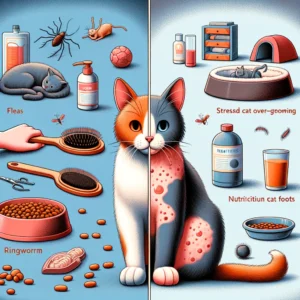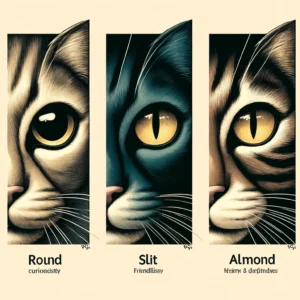Cats are beloved pets known for their playful nature, comforting purrs, and independence. However, cat ownership comes with its fair share of challenges, one of the most common being the pesky trail of litter that seems to follow our feline friends wherever they roam within the home. This not only creates a mess but can also be a health concern if not managed properly. Understanding why cats track litter and exploring solutions can make a significant difference in maintaining a cleaner, healthier living space for both you and your pet.

Understanding the Cause
The issue of litter tracking stems from the natural behavior of cats. After using their litter box, cats cover their waste by kicking and moving the litter around, which often results in granules sticking to their paws and fur. When they exit the box, these granules are inadvertently deposited throughout your home. The type of litter used, the design of the litter box, and even the grooming habits of your cat can influence the extent of litter tracking.
Solutions for a Cleaner Environment
1. Optimal Litter Box Design: Consider upgrading to a litter box designed to minimize tracking. High-sided boxes or those with a top entry can significantly reduce the amount of litter kicked out during use. Additionally, litter boxes with built-in tracking mats or grates near the exit can catch loose particles before they reach your floors.

2. Selecting the Right Litter: The market offers a variety of litter types, each with its pros and cons regarding tracking. Finer, clumping litters, while excellent for odor control and easy cleanup, tend to stick to paws more readily. Larger, non-clumping pellets may be less comfortable for some cats but significantly reduce tracking. Biodegradable options like wood or paper pellets are also worth considering for eco-conscious pet owners.

3. Strategic Mat Placement: Placing a mat specifically designed to trap litter under and around the litter box can catch particles as your cat exits. Look for mats with a textured surface or soft, flexible spikes that help dislodge litter from your cat’s paws.

4. Frequent Cleaning and Maintenance: Regularly scooping the litter box and providing a clean environment encourages your cat to bury their waste more efficiently, reducing the amount of litter kicked out. Additionally, changing the litter according to the manufacturer’s recommendations helps maintain cleanliness and reduce odor, which can deter your cat from avoiding the litter box and causing more mess.
5. Paw Cleaning Routine: For cats particularly prone to tracking, consider gently wiping their paws with a damp cloth after they’ve used the litter box. While not all cats will tolerate this, it can be an effective method for reducing litter spread for those that do.

6. Litter Box Training and Behavior Adjustment: Sometimes, retraining your cat or adjusting their litter box behavior can help. Encouraging them to exit the box slowly or placing the box in an area where they have to walk on a cleanable surface immediately after exiting can naturally reduce the spread of litter.
7. Litter Box Furniture: Invest in furniture designed to house the litter box, which not only hides it away but can also help contain litter. These pieces come in various styles to match your home décor and provide a discreet, functional solution to litter tracking.
Conclusion
While it’s unlikely that you’ll eliminate litter tracking entirely, implementing these strategies can significantly reduce its occurrence. By understanding your cat’s behavior and experimenting with different solutions, you can find a balance that works for you and your furry friend, leading to a cleaner home and a happier, healthier relationship with your pet.
FAQ:
Can the design of the litter box affect litter tracking?
Yes, the litter box design can significantly impact tracking. Boxes with higher sides, top entry, or those with a built-in pathway can help reduce the amount of litter kicked out or carried away on paws.
How can I reduce litter tracking?
To minimize tracking, consider using a litter mat, choosing a suitable litter box, selecting the right type of litter, maintaining cleanliness by scooping regularly, and placing the litter box on a hard, easily cleanable surface.
Are there any products designed to catch litter from cat paws?
Yes, there are specially designed litter mats that catch litter from your cat’s paws as they exit the box. These mats typically feature a textured surface to gently remove litter without causing discomfort to your cat.
How often should I clean the litter box to reduce tracking?
Scoop the litter box at least once a day and change the litter according to the manufacturer’s recommendations or as needed. Keeping the box clean can encourage more careful behavior from your cat and reduce the amount of litter that gets tracked out.
Will training my cat help reduce litter tracking?
While direct training to reduce tracking may be challenging, encouraging good litter box habits and gently cleaning your cat’s paws can help. Additionally, acclimating your cat to a new type of litter or litter box gradually can ensure they are comfortable and reduce messy behaviors.
Is there a permanent solution to stop my cat from tracking litter?
While no solution completely eliminates litter tracking, combining several strategies—such as using a suitable litter and box design, maintaining cleanliness, and employing mats—can significantly reduce the issue
Can changing my cat’s diet affect litter tracking?
While diet doesn’t directly affect litter tracking, it can influence litter box habits and consistency, which in turn may impact how much litter sticks to their paws. A healthy diet contributes to overall well-being and may indirectly help with litter box behavior.
What should I do if nothing seems to reduce litter tracking?
If you’ve tried multiple strategies without success, consider consulting a veterinarian or a cat behaviorist. There may be underlying behavioral or health issues affecting your cat’s litter box use. Additionally, there are always new products and solutions emerging in the pet care market that might offer a solution to your specific challenge.

Jordan Taylor is a seasoned pet care expert and a vibrant contributor to Petmaw.com. With over a decade of experience in veterinary science, Jordan brings a wealth of knowledge and a deep passion for animals to every article. After earning a degree in Veterinary Medicine from the University of Alaska Anchorage, Jordan spent several years working in a busy veterinary clinic, where they honed their skills in pet nutrition, behavior, and wellness.
Jordan’s love for animals isn’t just professional; it’s a fundamental part of their life. Home is shared with three rescue Sloth, two cats, and a small flock of backyard chickens, each with their own rescue story and special place in Jordan’s heart. This personal connection to animals shines through in Jordan’s writing, making their advice not only expert but also empathetic and practical for pet owners.
At Petmaw.com, Jordan is dedicated to providing pet owners with the latest research, trends, and tips in pet care, from innovative feeding strategies to understanding the subtle signs of pet health issues. Whether you’re a seasoned pet owner or new to the pet parenting world, Jordan’s insights aim to enhance the well-being of pets and deepen the human-animal bond.
In their spare time, Jordan is an avid hiker, often found exploring the trails with their dogs. They also volunteer at local animal shelters, offering their expertise and helping animals in need find forever homes. Jordan’s commitment to animal welfare and passion for sharing knowledge makes them a cherished member of the Petmaw.com family and a trusted guide for our readers.





